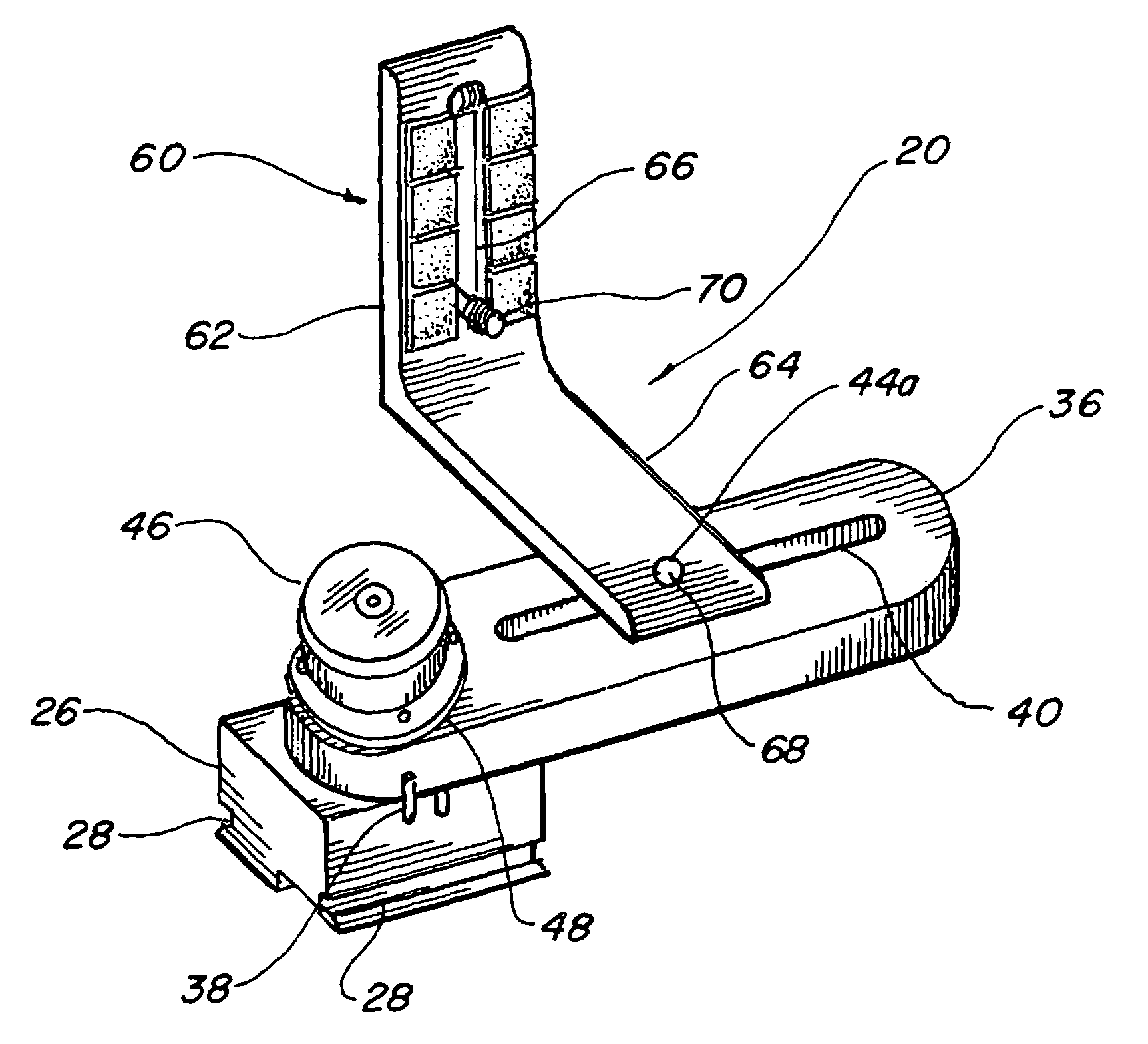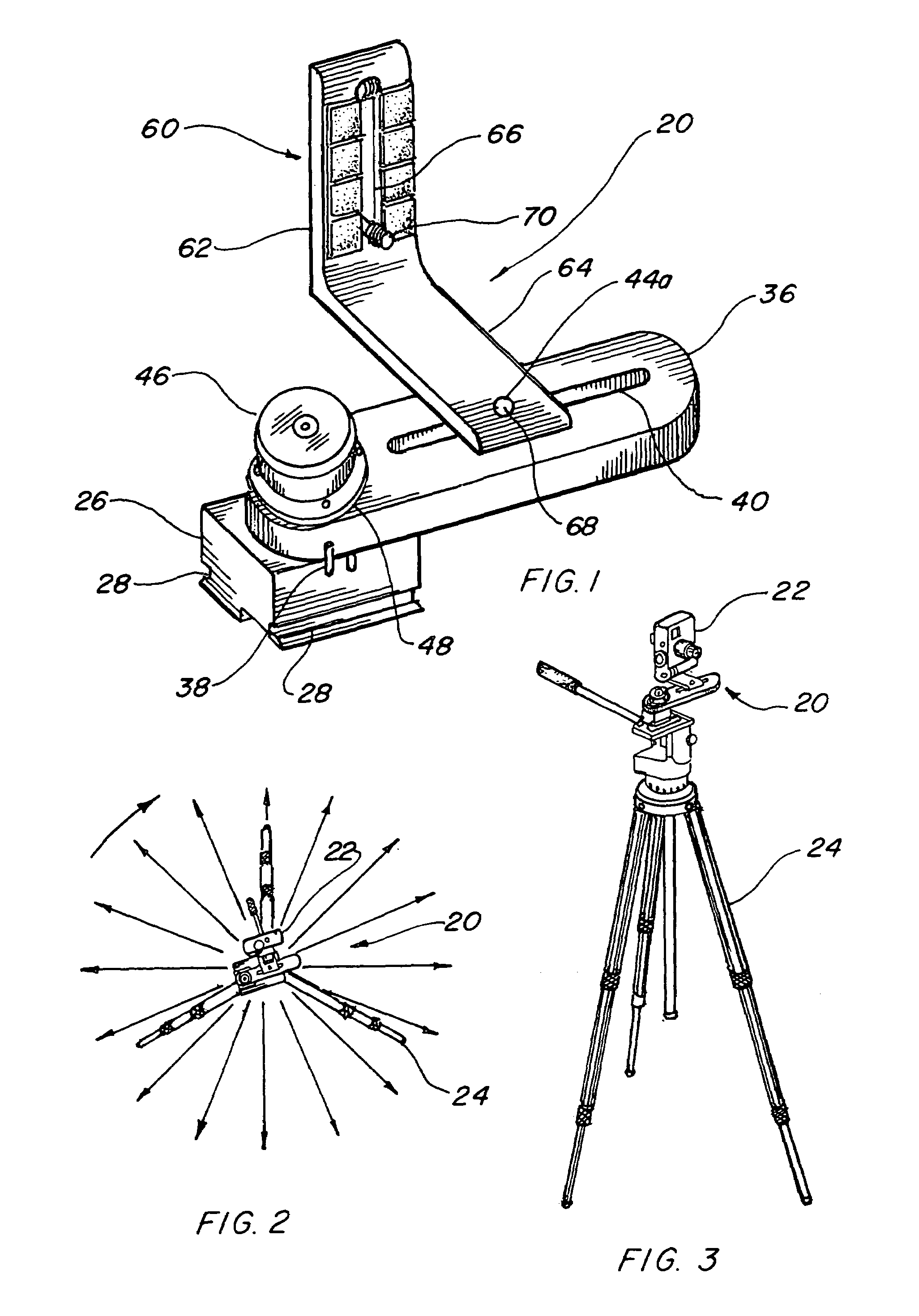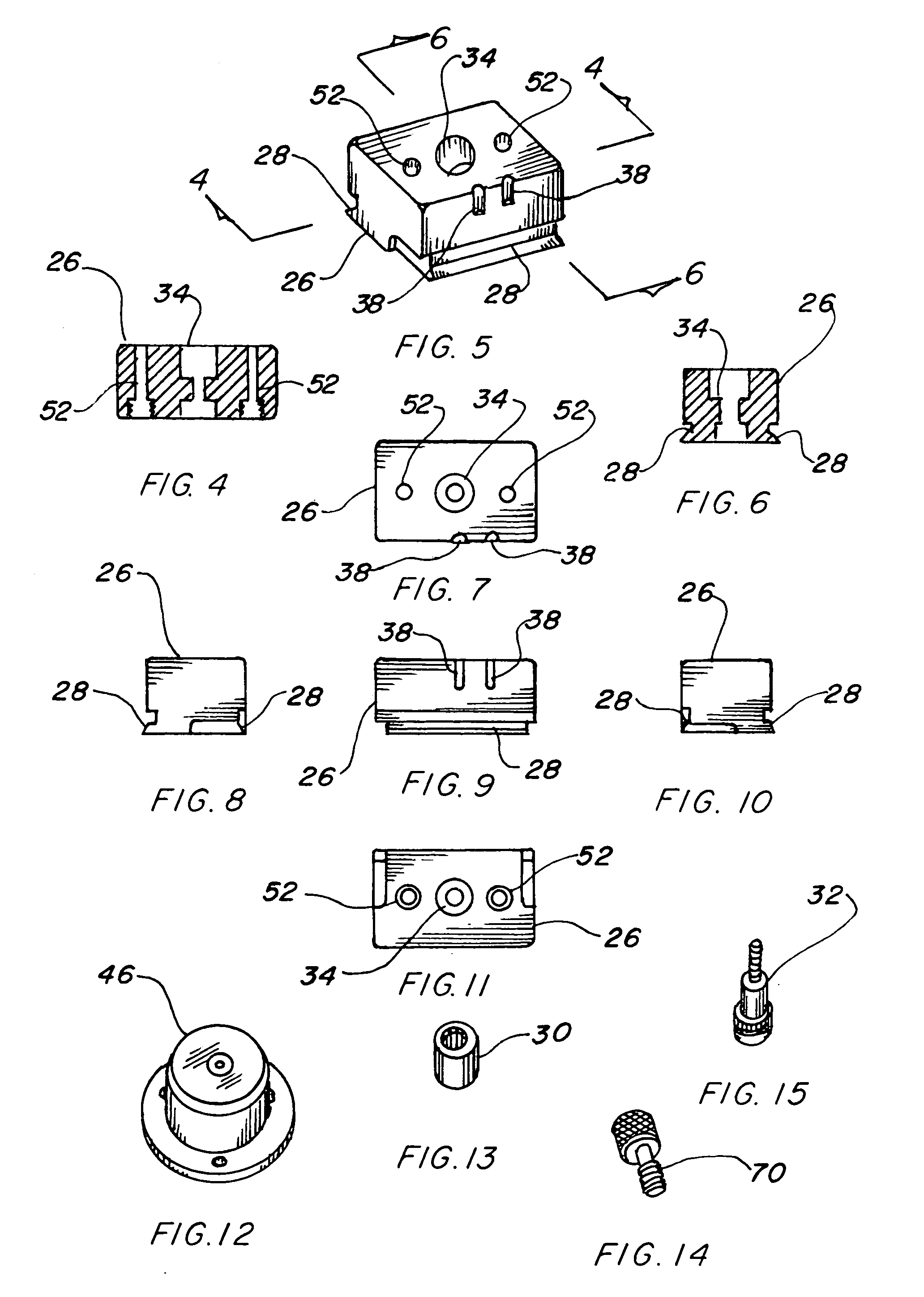Camera tripod rotating head
- Summary
- Abstract
- Description
- Claims
- Application Information
AI Technical Summary
Benefits of technology
Problems solved by technology
Method used
Image
Examples
Embodiment Construction
[0051]The best mode for carrying out the invention is presented in terms of a preferred embodiment. This preferred embodiment is shown in FIGS. 1 thorough 31 and is comprised of camera tripod rotating head 20 for taking 360 degree photographic images with a camera 22 mounted on a tripod 24. While the camera 22 and tripod 24 are not part of the invention the rotating head 20 permits the camera 22 to achieve the desired functional operation when mounted on the tripod 24.
[0052]A tripod mounting adapter base 26, shown in FIGS. 5–11, is configured to mate and attach to a conventional camera tripod 24 having a dovetail groove. This attachment method is well known and a relative standard in the industry and therefore the rotating head 20 may be securely attached to the tripod 24 assuring a solid and repeatable junction therebetween.
[0053]The tripod mounting adapter includes a one way roller clutch 30 that is mounted within the approximate center of the adapter base 26 with a shoulder bolt ...
PUM
 Login to View More
Login to View More Abstract
Description
Claims
Application Information
 Login to View More
Login to View More - R&D
- Intellectual Property
- Life Sciences
- Materials
- Tech Scout
- Unparalleled Data Quality
- Higher Quality Content
- 60% Fewer Hallucinations
Browse by: Latest US Patents, China's latest patents, Technical Efficacy Thesaurus, Application Domain, Technology Topic, Popular Technical Reports.
© 2025 PatSnap. All rights reserved.Legal|Privacy policy|Modern Slavery Act Transparency Statement|Sitemap|About US| Contact US: help@patsnap.com



